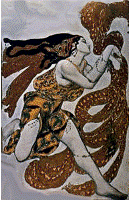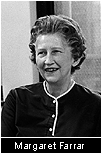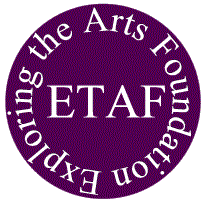

|
| |||||||||||||||||||||||||||||||||||||||||||||||||||||
|
| |||||||||||||||||||||||||||||||||||||||||||||||||||||
 A life in the arts—the life of
margaret Petherbridge farrar
| |||||||||||||||||||||||||||||||||||||||||||||||||||||
| Solving crossword puzzles is "...part science of deduction, part mother wit, part erudition." |
| —Margaret Petherbridge Farrar First Lady of Crosswords |

Considering the extent of the contributions she made to the world of crossword puzzles, Margaret Farrar (née Petherbridge) more than earned her title of First Lady of Crosswords; it's as apt an appellation as one can find.
Margaret was the first lady in more ways than one. She arrived in this world in 1897, on the cusp of the crossword puzzle revolution (the crossword was invented in 1913, which is recent as games go). Her timing couldn't have been better. She grew up during the crossword puzzle's baby boom and wasn't far into her adult life she became a prominent American crossword puzzle editor.
Margaret fell into her life's work by accident and by stages became editor of The New York Times crossword puzzle feature, the most prestigious and popular of any puzzle feature in a U.S. newspaper. Under her guidance The Times became the U.S. bastion of the crossword puzzle.
While enthroned as Times editor, Farrar established many of the rules and principles that govern crossword construction standards and conventions; her principles for designing and styling puzzles apply even to the present day. In addition, throughout her adult life she constructed and published an enormously popular series of puzzles that fill 134 crossword puzzle books, the longest-running book series of any kind by any author. In the very early days, during the 1920s and 30s, her puzzle books both impelled and capitalized on the nascent American passion for these "crossed-up" diversions. But so finely constructed are they, they have outlasted the fads; they're still enormously popular and still in print.
Crossword puzzles were her life's work and she was a natural at it. If the Nobel Committee awarded prizes for crossword puzzle editing and construction, she might have become a laureate.
Margaret Petherbridge was educated at the Berkeley Institute in Brooklyn and at Smith College. When graduated in 1919, only six years after the invention of the crossword, she had no interest in crossword puzzles. She took a secretarial position in a bank (people seemed to believe that female talent could be squandered in those days), and a year later obtained a position as secretary to John O'Hara Cosgrove, editor of The New York World, a newspaper that had been the first in the world to publish a crossword puzzle.
The man who had constructed that world's first crossword puzzle was a journalist named Arthur Wynne. At the time Margaret took the job with Cosgrove, Wynne also was working for him in the capacity of crossword puzzle editor. Crosswords had grown in popularity since Wynne invented them and he had become so busy with constructing, editing, and generally keeping up with crosswords submitted by readers that soon after her arrival at the paper Margaret's boss reassigned his new secretary to help Wynne.
As the story goes, at first Petherbridge was disinterested in puzzles; she didn't care for her new assignment. But once she started solving them, it wasn't long before she was looking for ways to make them more fun, more fascinating, and tougher. Although she didn't realize it yet, by accident Margaret had fallen into a bonanza.
As it turned out, Margaret developed a penchant for her new roll at the newspaper. Some might say that accident is the wrong word to describe it; that is, they might say that it was fate that the person who turned out to be one of the world's finest and most talented crossword constructors had, without trying to and against her own desires—obtained a job with the inventor of the crossword puzzle on the first newspaper ever to publish one. Others might argue that her timing was little less than miraculous; that it was downright odd that a kid fresh out of school and in her second job had just the right imagination and language skills to make this a match made in heaven at a time when the crossword was in its infancy and needed a booster just like her. But whatever kind of miracle was at work, what counted for her is that she had gained a life-long career; and what counted for the world of the crossword puzzle is that she was its champion.
Learn why this job was a perfect match. Explore the history of the crossword puzzle and Farrar's influence on the game. Visit The Muse Of Language Arts' page called World Of Crossword Puzzles - The Game.
The World of Crossword Puzzles—The Game is part of The Muse Of Language Arts' feature called The World Of Crossword Puzzles: click here.
While at The World, as editor she developed the structure, style, liveliness, and other characteristics of the crossword. Her innovations excited the public and propelled the puzzle into a virtual mania among readers (see below, Contributions). Now she was an established figure.
In 1924, Simon and Schuster, who were just starting out in publishing, decided to take advantage of the success of the crossword by publishing a book of puzzles of their own. Up to then, puzzles had been the exclusive province of newspapers; now they were about to be available in book form, a brand new idea.
When it came time to created the book, naturally the fledgling publishers thought of going to The Times for talent. They enlisted Petherbridge's services along with those of two other Times crossword editors, who together constructed and assembled a large number of puzzles into a book titled, The Cross Word Puzzle Book. The title may not have been much of an inspiration, but the marketing was—each copy in the first printing came with a pencil.
The Cross Word Puzzle Book was the first collection of crossword puzzles ever to be published. Nothing like it had been done up to that time. Ironically, it seemed so great a business risk to Simon and Schuster, they issued it under the name of another publishing house.
As it turned out, the publishers needn't have worried. The new book was an instant success; their market timing had been perfect. By 1924, what was once merely a newfangled pastime was now set to become an important fad; the public couldn't get enough of them. Because newspapers came out only a few times a day, they weren't printing new puzzles fast enough; they weren't satisfying demand. A book filled with puzzles was just what the public wanted. Moreover, no there was no competition because no other puzzle books had yet been printed.
This new way of publishing puzzles was a huge success. Petherbridge was now associated with a great financial and cultural coup. Her book sparked a national craze. Sales went up like gasoline on smoldering coals. The book sold 40K copies in its first three months. Two more books like it were rushed into print that same year. Altogether, S&S sold nearly 400,000 crossword puzzle books in their first year. So strong was the demand for fresh material, successors appeared at the rate of about two a year thereafter, all under Farrar's editorship.
In May 1926, she married author and publisher John C. Farrar.
Throughout the twenties and thirties, crossword puzzles gradually became an established department in most newspapers, where they attracted legions of loyal fans. The only major American daily to refuse to include crossword puzzles was The New York Times, which, by the way, had also shunned the comic strip. Eventually competition with other newspapers forced The Times to do a turnabout. Quite naturally they turned to Farrar.
In 1942 the Sunday edition of The Times began printing a crossword puzzle, and in 1950 it became a daily feature as well, both under Farrar's editorship. She remained at her post at The Times until retirement in 1969. While there she edited 18 collections of Times crossword puzzles. In 1974, she was appointed a director at the publishing firm Farrar, Straus and Giroux and remained in that post for the rest of her life. When she died in 1984, she was working on her 134th book of crossword puzzles.
Throughout her long career, she established most of the rules (de facto standards) that govern crossword puzzles. For example, Arthur Wynne's original concept for his word cross was to "double number" clues; she relegated this idea to the scrap heap.
See what it's like to solve a puzzle constructed with "double numbered" clues. See a copy of the world's first crossword puzzle, the one published by Wynne in 1913, in which he employed double-numbering. Visit the American Crossword Puzzle Tournament web site's page on the history of crossword puzzles: click here.
Among her more important innovations was establishment of the standard grid structure for the crossword puzzle. She is the source of virtually all the construction design practices followed by constructors today. They do not conform to her designs because there is a standards body that says they must; they adopt her policies because it's smart to do so.
For example, as played in the U.S. today, most crossword puzzles take the shape of a square box; the box contains the white squares into which solvers enter letters; white squares are separated by black squares. The pattern of white and clack squares in this square box is symmetrical. Another way to say this: Pick up a puzzle by any edge and hold it up to light; now turn it upside down. The arrangement of black squares will be exactly the same. These are her innovations.
Some of her other innovations:
The puzzle must have visual appeal. Black and white squares organized in symmetrical patterns. Not too many black squares; black squares should take up no more than one-sixth of the diagram.
Boxes in a single answer must be contiguous.
Diagrams must have an odd number of squares on a side. This creates a central square and allows answers to go across or down the exact center of the puzzle.
Every letter must be present in two words, across and down.
No single letter can be wedged between two black squares. (This characteristic is a feature of American, not English puzzles).
All answer words must be three letters or longer.
No clusters of words that are isolated from the rest of the puzzle by black squares are allowed.
No uncrossed letters.
Multiword answers are permitted, ushering in the possibility to make answers that are phrases and answers with words related by wordplay.
Answers should not be obscure, should be true to real life.
Clues do not have to be taken from dictionary definitions; they can be taken from real-life situations, humor, slang, and the way people speak in everyday conversation.
In reading the above list, did you realize that are are so many ways a puzzle can go wrong? Today, constructors design puzzles the way they do because Margaret showed the way.
At The New York Times, she instituted the idea of making puzzles more difficult day-by-day as the week went on, with Monday's puzzle the easiest. She strove to publish puzzles that were visually appealing. She also introduced the concept of the theme puzzle, in which many or most of the clues and answers relate to a common subject. And she set a high bar for intelligence, wit, ingenuity, and style.
Farrar was not only a brilliant puzzle editor, she was a brilliant designer and constructor, a combination of talents that served her in good stead throughout her career. In addition to writing columns, she edited numerous editions of New York Times puzzle books. She later edited a series of similar books for Pocket Books and a Crossword Puzzle Omnibus series. The Cross Word Puzzle Book and its successors, cited earlier, were her first major ventures involving publishing books of puzzles that she had also created. That was only the beginning. Today she is famous for constructing and publishing an enormously popular series of 134 puzzle books throughout the period from 1924 to 1984, the longest-running continuous book series of any kind by any author.
Crossword editors require contributors; good editors attract talented contributors. In addition to her other accomplishments, Farrar was a keen judge of talent. She accumulated a group of superb constructors whose members ranged from a sea captain to a violinist in the New York Philharmonic and included several prison convicts.
There's a lot more to know about the world of crossword puzzles Farrar helped to create.
Will Shortz is a crossword puzzle editor, constructor, tournament director, and game historian par excellence. He currently occupies the crossword puzzle editor's desk at The New York Times that was established in 1942 by Margaret Farrar, another crossword puzzle editor par excellence.
For a cross-worder, sitting behind Farrar's desk is an honor comparable in some respects to that enjoyed by physicist Stephen Hawking, who occupies the same Lucasian Professor of Mathematics chair at the University of Cambridge that once was occupied by Sir Isaac Newton.
Farrar's contributions receive respectful mention from many quarters but, strangely, Electricka knows of no book dedicated solely to her life. Some places to look for treatments:
Encyclopedia Britannica.
Notable American Women: A Biographical Dictionary: Completing the Twentieth Century, Susan Ware and Stacy Braukman, editors. A short bio and life history explaining her accomplishments and contributions from the woman's point of view. Covers place and date of birth and death, family members, education, professional associations and honors, employment, writings, a description of the author's work, and references to further readings about the author.
Contemporary Authors: Biography - Farrar, Margaret Petherbridge (1897-1984), a reference volume published by Thomson Gale. A short bio and life history explaining her accomplishments and contributions. Covers place and date of birth and death, family members, education, professional associations and honors, employment, writings, a description of the author's work, and references to further readings about the author. Farrar receives about 300 words.
The Crossword Obsession : The History and Lore of the World's Most Popular Pastime, by Coral Amende. As the title states, this book includes a history of the development of the crossword puzzle and a description of its underworld. in which Farrar figures prominently. Filled with one interview after another, some mentioning Farrar. Interviews ramble.
Cruciverbalism: A Crossword Fanatic's Guide to Life in the Grid, written by Stanley Newman, a prominent constructor with inside connections, with writing assistance from Mark Lasswell. Intelligently written and full of pertinent facts. Detailed and readable blow-by-blow style. Partly-first-hand historic account of the evolution of the crossword, including the history of Farrar's contributions and an appreciation. Covers prominent personalities well.
Gridlock: Crossword Puzzles and the Mad Geniuses Who Create them, by Matt Gaffney.
Farrar's puzzles were nothing if not consistently good. You can get an idea of this amazingly uniform high quality by working puzzles taken from books she produced over a range of years. Two suggestions:
The 7th Pocket Book of Crossword Puzzles, by Margaret P. Farrar. Published 1957.
Simon and Schuster Crossword Puzzle Book, Series 119 (Simon & Schuster Crossword Puzzle Book), by Margaret Farrar. Published 1979.
|
|
Search this web site with Electricka's Search Tool:
tap or click here
Electricka's Theme Products
Shop At Cafe Press
This web site and
its contents are copyrighted by
Decision Consulting Incorporated (DCI).
All rights reserved.
Contact Us
Print This Page
Add
This Page To Your Favorites (type <Ctrl> D)


You may reproduce this page for your personal
use or for non-commercial distribution. All copies must include this
copyright statement.
—Additional
copyright and trademark notices—
| Exploring the Arts Foundation |
 |
| Today's Special Feature |
| Search Now |
| To Do | ||||
|
| Feature Pages |
| Related Pages |
| ETAF-Amazon |
|
|